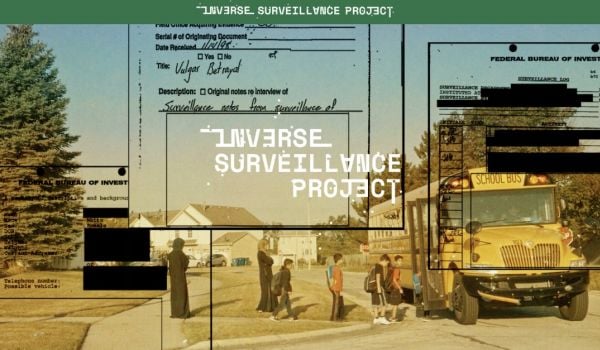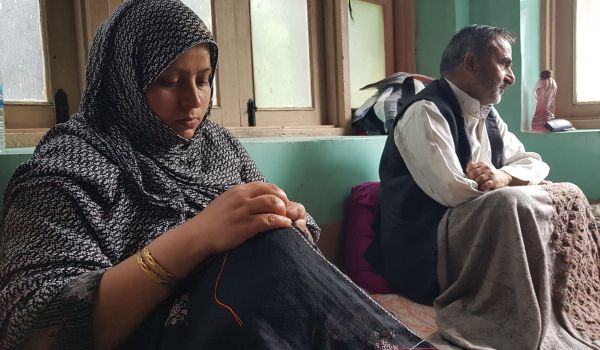Back in 2013, Jonathan Alvarez embarked on his own ethnographic research while incarcerated. As part of the Bard Prison Initiative, a prison education program from Bard College in New York, he started researching the topic of prison fashion.
“It took on a life of its own,” he recalls. “In my research I was able to understand the kinds of conversations that were happening around fashion in New York State facilities, and I was able to look at the perspective of anti-fashionistas and pro-fashionistas in the incarcerated space. ”
Eight years later, that research came to life in the form of Clothing Inside: Addressing American Prisons, a New York City exhibit displaying the material conditions of living behind bars, including prison uniforms, shoes, handcuffs and feminine hygiene products.
Alvarez co-curated the exhibit, which was on display at Parsons New School this September, with Tzuni Lopez, a Parsons lecturer, and Rashida Ricketts, host and producer of the Graves to Gardens podcast. They plan to build off the work and exhibit Clothing Inside in new spaces.
“I’m in a kind of shock how far this idea has come,” Alvarez says. “We’ve seen how this vision has come to life, expanded, developed and taken on different directions.”
The resulting exhibit is multi-dimensional, touching on the many material experiences of incarceration. Testimony from formerly incarcerated people loops throughout the main gallery, which includes clothing alongside various objects, information on their significance, and an oversize display of a prison commissary list. Outside the gallery are more prison uniforms, a “t-shirt wall” with political, anti-prison shirts from different organizing collectives, and paintings from Sabri Al Qurashi, who was detained for 12 years without charge at Guantanamo Bay.

(Photo courtesy Clothing Inside team)
Alvarez, Ricketts and Lopez met while studying fashion at Parsons New School: Ricketts’ graduate thesis focused on incarcerated women’s experiences with clothing and other material objects; Lopez studied curation; Alvarez studied fashion trends and urban poverty. They quickly found there was little research around fashion in prison and committed to changing that.
To start, they delved into political and abolitionist texts around mass incarceration including Angela Davis’ “Freedom is a Constant Struggle” and Liat Ben-Moshe’s “Decarcerating Disability.”
“Prison in the United States is something so hidden away from the public eye, but utilizing fashion and clothing we could potentially get people to have a level of comprehension and empathy toward what it was like,” Lopez says.
“It wasn’t just the clothing that we wanted to focus on,” Ricketts notes. “We wanted to also think about objects like handcuffs, sanitary napkins, things that people put on their body and the lived experience of that.”
Parsons New School accepted their proposal to exhibit at a university gallery in the spring of 2020; the exhibit was delayed until this year due to the pandemic. The extended timeframe ended up being “a blessing,” Ricketts says, “because we were able to expand upon the research we had.” They also hosted a fundraiser to support their work and started a Clothing Inside newsletter to share their findings.
Collecting the items took significant effort. “As we started this process, the number one object we wanted on hand was uniforms — we didn’t realize how challenging that would be,” Ricketts says. “It lends to the idea of invisibility, and keeping barriers between people who are behind bars.” Ricketts purchased eight uniforms — two jumpsuits and six pants/shirt combinations — after cold calling the distributor Phoenix Supply, but the company wouldn’t accept a re-order. Unable to secure handcuffs, the team bought a party-store replica.
Building off Alvarez’s work, the team wanted to show how incarcerated people reclaim their identity while uniformed. In one uniform display, Alvarez’s own white polo is set against the “state green” prison pants. The exhibit also talks about the importance of the prison “tailorman,” who helps people modify their state-green clothing.
“There’s transgressive consumption, transgressive acts against the state,” Alvarez says. “What many may think is insignificant actually has a lot of significance for people incarcerated.”
Lopez connected with the group Abolition Now O.C., which provides mutual aid support for people leaving Orange County’s Theo Lacy Facility: “I sent them an email after seeing a paper jumpsuit on one of their social media channels.” People leaving the jail are forced to wear the jumpsuit if the facility determines their clothes to return to free society are “inadequate.” The collective loaned a jumpsuit and a few other objects, including a DIY wallet made from materials collected inside the jail.
_920_1227_80.jpeg)
(Photo courtesy Clothing Inside team)
Other items focus on women’s experience of incarceration. The team connected with the artist and Ear Hustle podcast co-host Nigel Poor, who collects bra underwire discarded in the parking lot of San Quentin State Prison. (Women cannot wear underwire bras into prison visiting rooms.) Her collection went on loan for the exhibit. They also displayed feminine hygiene products.
“What we found throughout speaking with different individuals was that they had very limited access to sanitary napkins,” Ricketts says. “They also found ways of using these objects not just for menstrual periods … because their shoes were very uncomfortable to walk in, they’d line their shoes with sanitary napkins.”
Lopez, Ricketts and Alvarez all agree the most powerful part of the exhibit is the installation of a minimalist prison cell, outfitted with a clothesline — a common set-up that’s actually against prison rules. Undergarments hang from the clothesline, with the recording of formerly incarcerated people’s testimony playing from above.
“Being in that structure, hearing the interviews, one of the more important pieces for me is that the voices of people are heard,” Ricketts says. “Hearing first hand about people who have lived through this, you come away with a different viewpoint on the objects throughout the gallery space.”
Through the month, the team used the exhibit to prompt dialogue and awareness around the many injustices of mass incarceration. By displaying the politicized “t-shirt wall” in a hallway trafficked by New School students and faculty, “We wanted people to think about ways they could incorporate abolition in their everyday life,” Lopez says.
Formerly incarcerated folks, and loved ones of incarcerated people, have shared their insight, feedback and what the team missed. “It generated such a rich conversation that made us tap back into our lived experience,” Alvarez says of discussing the exhibit with men he was incarcerated with. “Part of that conversation was — ‘yo, you should have caught this!’ I have lived experience, but I also have blind spots in my creative practice.”
With that in mind, the team plans to expand upon Clothing Inside. They will start a website, continue their newsletter and host events this year around the topic of prison fashion. “Our network has expanded, on account of this existing in public, and that’s going to affect future iterations and include more people in the conversation,” Lopez says. At the moment, the curators are actively seeking other locations to show the exhibit.
“I can’t wait to see, once we bring this to another space, what kind of impact we’ll have there and the conversations we’ll be able to spark,” says Alvarez.

Emily Nonko is a social justice and solutions-oriented reporter based in Brooklyn, New York. She covers a range of topics for Next City, including arts and culture, housing, movement building and transit.
Follow Emily .(JavaScript must be enabled to view this email address)

_920_690_80.jpeg)














